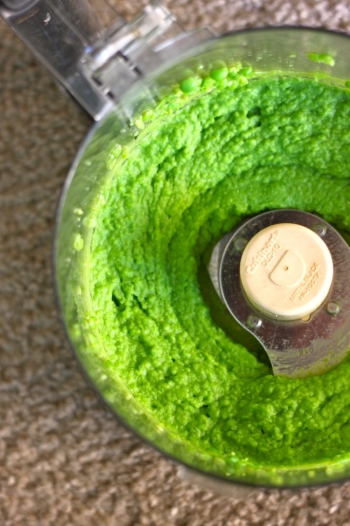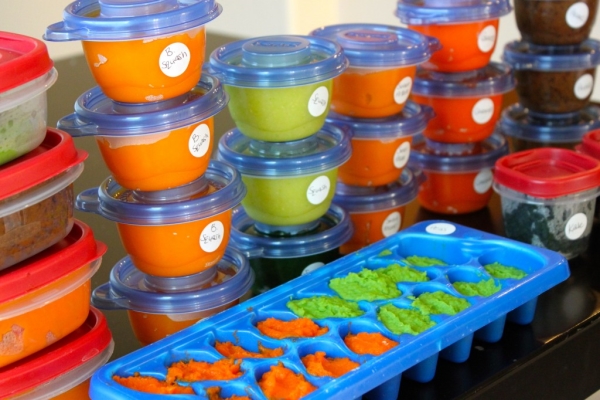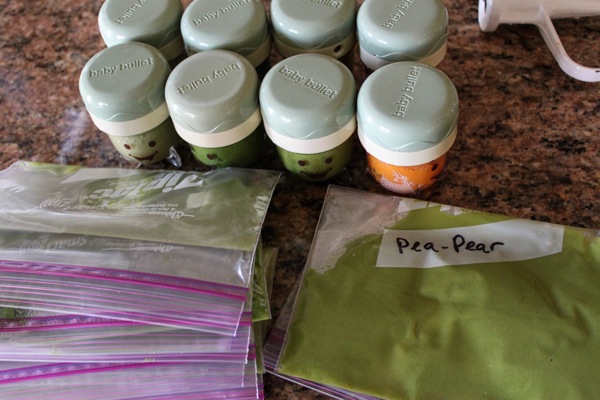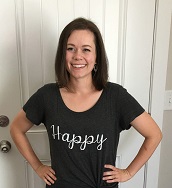Make Your Own Baby Food!
Benefits And Tips
An ever-growing trend in the mama world is making your own baby food. With my son, I was teaching and the idea of spending so much time on something I could easily buy at the store was a little daunting. However, with my daughter, I get to be a SAHM, and I thought I would take advantage of my situation and make my own baby food.
Now, at first, it can seem like a trade-off that's totally not worth it. You have to do a lot of cooking, pureeing, freezing—it can be a lot of work. And why would anyone go to that trouble when it is so much easier to just pick some up from the store?
Because it is so much cheaper!!! Not only that, but I honestly think it tastes way better. I remember buying peas from the baby food aisle for my son, and trying them—they are a little nasty! They're also kind of gross-looking—let's just say that shade of green is not the most appetizing. But with the peas I made, they were BEAUTIFUL! They were a pretty bright green—and they taste way better.

Another benefit to making your own baby food is you can choose what's in it, and you don't have to worry about any extra additives or chemicals that might be found in the baby food. When you are making your own, you can keep it strictly veggies or fruits. Plus, you can create your own variations, rather than being limited to the creations at the store. It's also kind of cool to think that you made your child's food!
Now I definitely think store-bought baby food has its place—like I said, that's all I used with my first. But if you're feeling adventurous or looking to save money, here are some tips when making baby food.
BUYING:
You may want to start small. You don't want to buy a ton of spinach if your baby is allergic or doesn't like it. However, once you know how much of a particular food your baby will eat, you can buy what you need. You'll also want to be careful not to buy way more than your baby can eat before it will go bad (though most food should last a couple months).
COOKING/PREPARING:
Some like to prepare all their baby food at once, while others like to do one food at once. Either way, be especially careful when cooking baby food. You should always be sanitary when preparing food, but especially when preparing baby food.
Most veggies need to be cooked first so they are soft enough to puree. Steaming is probably the best method as it allows the maximum amount of nutrients to stay in the food. Some fruit, like apples, may need to be boiled or steamed so they can soften; but some fruits, like peaches, won't need to be cooked first.
Once the food is cooked you can begin the blending/pureeing process. A food processor is probably the most efficient way, but you can use a blender as well. Puree the food thoroughly. Some veggies (like carrots) may require a little water so they aren't too thick.
FREEZING/STORING:
Some like to use ice cube trays. Divide the pureed food into the cubes and let it freeze; once they're frozen, transfer them to small Ziploc bags and label them. This method is nice because you have tiny servings, and it's easy to pull out one or however many servings you need. You can always mix up flavors as well by pulling out one ice cube of one food and another ice cube of a different flavor and mashing them together.

Others use small Tupperware containers or Baby Bullets, and they just pull out the food they will be using the morning of. This is nice if your baby is going to be eating a lot more than one or two ice cubes worth of food.

Keep in mind that even when you are preparing your own baby food, you should always get the green light from your pediatrician first. It is also wise to wait 4-5 days between introducing new foods in case of allergies.
- https://thediva-dish.com
- https://fitnessista.com
 Camille Hoffmann
Camille Hoffmann
Weekly Newsletter Contributor since 2014
Email the author! camille@dvo.com
